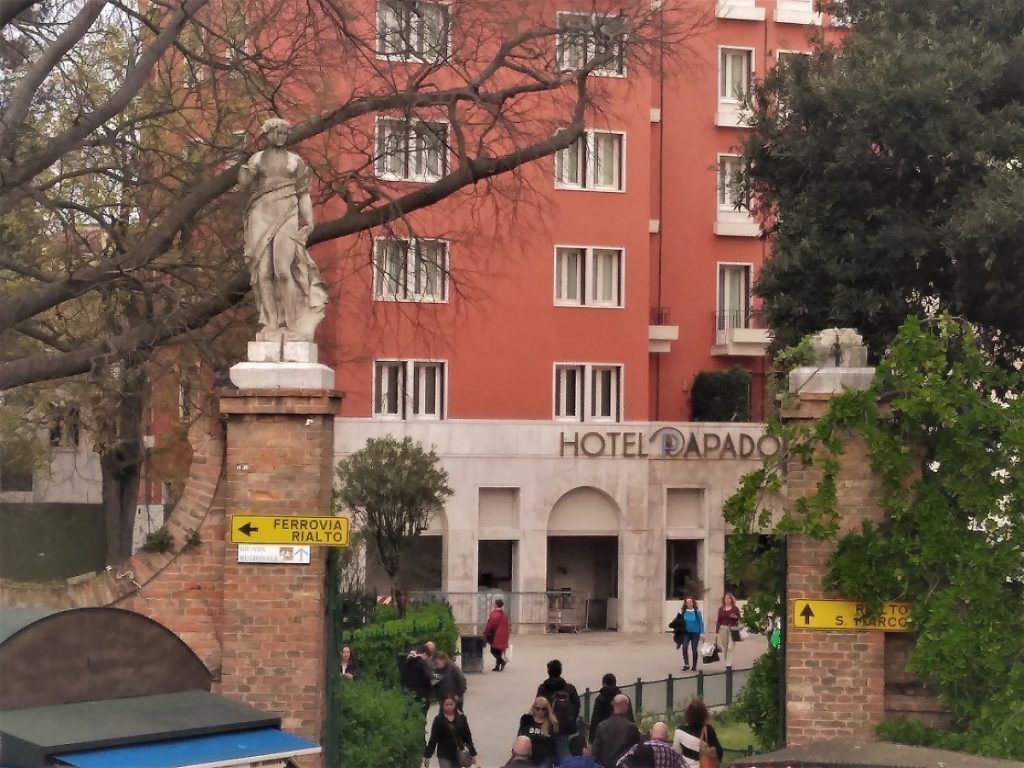Earthquakes in Italy and Venice.
Look at the picture. On top of the pillars, there should be two statues, one on the right and one on the left. It’s just that the one to the right is missing. It fell down in one of the many earthquakes in Italy every year.
It happened in the morning on the 29th of May 2012. The epicenter was in Emilia Romagna around Modena. As always it had been announced with many quakes the weeks before but the major ones happened the 29th. At 9 a clock the first strong one came. It was followed by others during the day with another important shake at 1 p.m.
 In Emilia the damage was significant. 27 people died and many more suffered injuries. Buildings collapsed or were seriously damaged all over the territory, mostly in the province of Modena. There were villages that were more or less totally destroyed.
In Emilia the damage was significant. 27 people died and many more suffered injuries. Buildings collapsed or were seriously damaged all over the territory, mostly in the province of Modena. There were villages that were more or less totally destroyed.
Italy is a seismic country. Earthquakes are very common. The antique city of L’Aquila in Abruzzo was almost completely destroyed in 2009. We have no less than 10 active volcanoes, and one can only think about the famous Pompeji south of Naples, which was covered in ashes so fast that people were carbonated running.
And Venice? How is it in Venice?
The 2012 earthquake in Modena was so strong that even in Venice, 100 miles away, the statue of the Papadopoli bridge fell. It’s the first bridge you cross after leaving Piazzale Roma and going towards Rialto. The statue was scattered and after 7 years his friend on the other side is still standing there all alone.
 But apart from that, nothing worth mentioning happened on that occasion. Sometimes you can feel the ground move from earthquakes in other places in northern Italy. Venice is not dangerous though. Italy has been divided into territories and given a number that corresponds to the risk of earthquakes. In Venice, the number is 4 which is the lowest risk.
But apart from that, nothing worth mentioning happened on that occasion. Sometimes you can feel the ground move from earthquakes in other places in northern Italy. Venice is not dangerous though. Italy has been divided into territories and given a number that corresponds to the risk of earthquakes. In Venice, the number is 4 which is the lowest risk.
The reasons for this are two. First, Venice just isn’t very seismical. We are not on or near the mountain chain the Apennines which is formed as a result of the collision of the African tectonic plate with the Adriatic plate, which is a part of the Eurasian plate. Most earthquakes happen on those hills… Or in the eastern Alps. The other reason has to do with the mud. It works as a damper of the ground movement.
 2012
2012
Still, the earthquake in May 2012 was scary. I was at home and suddenly the whole house started dancing. My wife and I just stood there, looking at each other while the glass doors of the living room cupboard rattled and the windows squeaked.
Other Italians suffer much more and crying over a smashed statue is ridiculous. In L’Aquila 2000 men, women and children still live in provisional homes. After 10 years! The restoration is underway but f.ex. the schools and other official buildings are still dislocated and provisional. A big part of the rich cultural heritage, the churches, and palaces are gone forever. In Emilia the situation is similar.
Unfortunately, in Italy, it is very difficult to secure buildings and infrastructure. We have old things here. Many c
ities were founded in the Roman era. Almost every city, town or village has a medieval center with palaces and churches built of stone and even the roads are often built upon very old, sometimes even Roman foundations.

2013
I was in Osaka, Japan in 2013, when a major earthquake hit Awaji Island, some 50 miles away. I woke up very early by the shaking. The room was moving like a rollercoaster and it was difficult to stand up. Then I did what you’re not supposed to do… I ran down to the lobby through the stairs.
I approached the counter, shouting: “There’s an earthquake!!” (as if they didn’t know that…). But the staff was completely calm and said there’s nothing to worry about. So I turned around and saw only westerners in the lobby, Europeans, Americans, white people. All scared out of their wits. And I realized that the Japanese were probably all sleeping.
The Japanese houses are built from steel beams bolted together and then covered with lightweight panels. It moves a lot but it doesn’t break. The Italian houses, the medieval palaces, are built from stone and cement. It’s heavy, it’s stable but when the ground shakes the result can be disastrous.

Comments are closed.